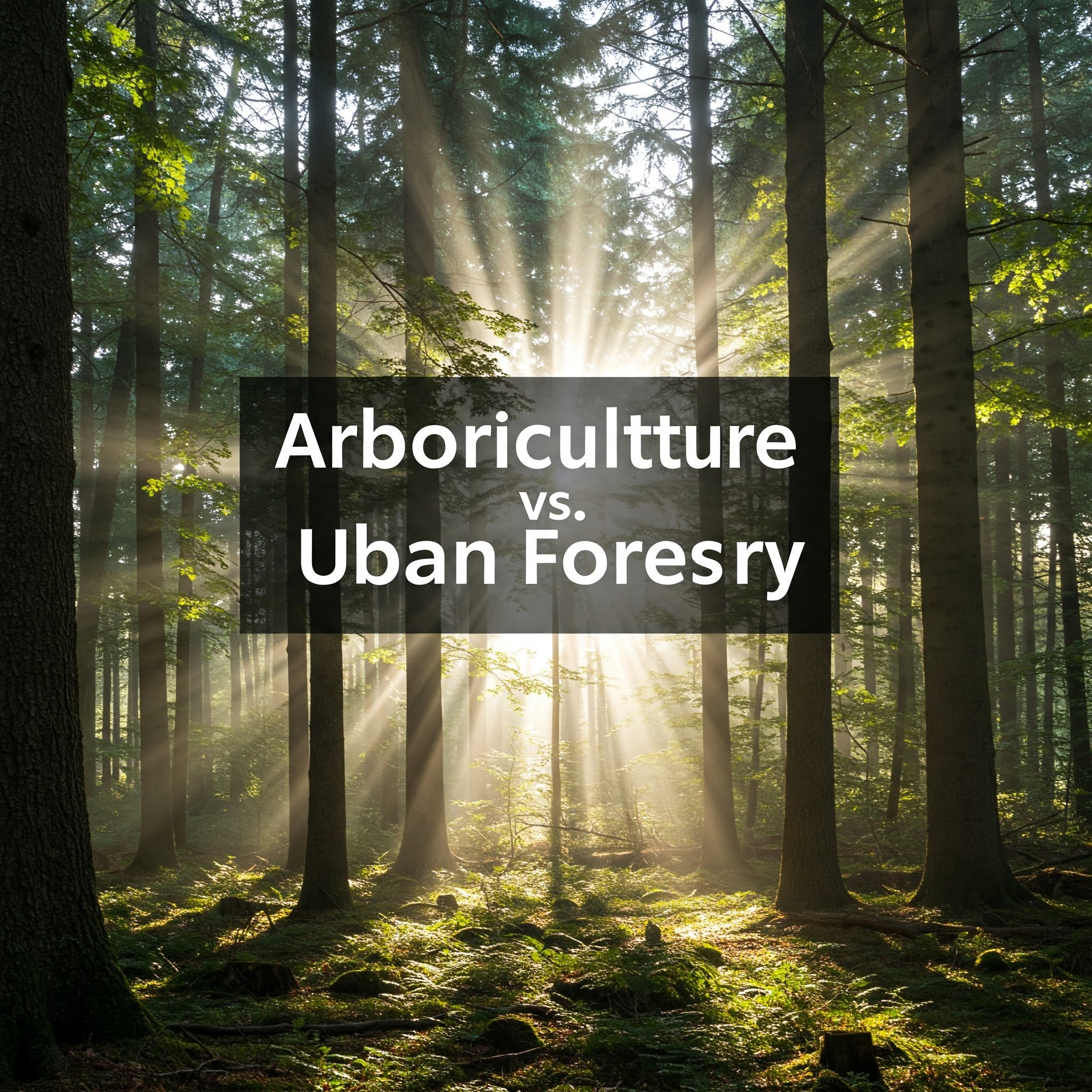
Arboriculture and urban forestry are two related but distinct fields that focus on managing and caring for trees in different contexts. Here is a brief comparison of arboriculture and urban forestry:
Arboriculture:
Arboriculture is the study of individual trees and their care. Arborists, who are professionals trained in the science of arboriculture, work to maintain and improve the health, safety, and aesthetics of individual trees.
Arborists are trained to assess the needs of trees, prune and trim them to promote healthy growth, diagnose and treat diseases and pests, and remove trees when necessary. Arboriculture is often practiced in residential, commercial, and municipal settings, where individual trees are managed for their aesthetic and ecological value.
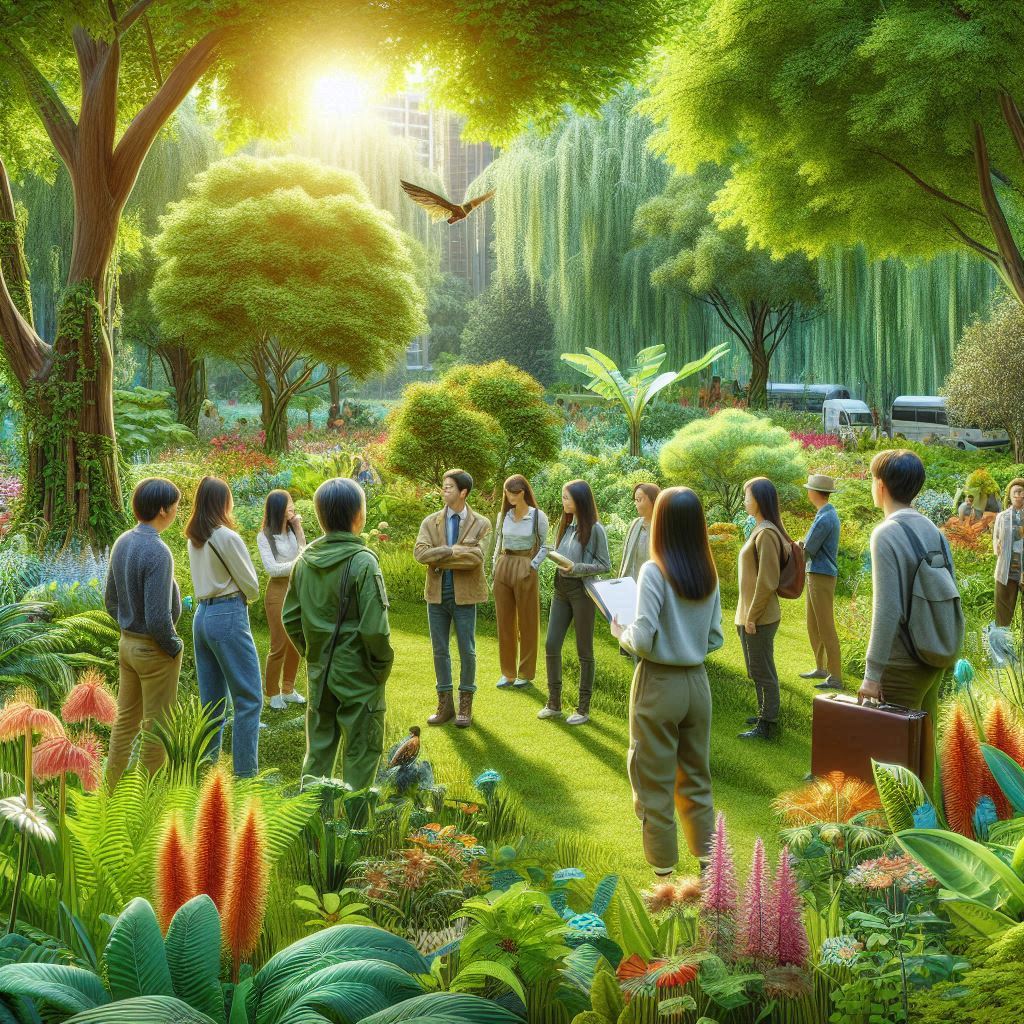
Arboriculture focus points
Arboriculture is the study of individual trees and their care. Arborists, who are professionals trained in the science of arboriculture, focus on maintaining and improving the health, safety, and aesthetics of individual trees. Some of the key points of focus in arboriculture include:
- Tree Health: Arborists focus on maintaining and improving the health of trees by identifying and treating diseases, pests, and other issues that can affect tree health.
- Tree Safety: Arborists prioritize tree safety by ensuring that trees are not a hazard to people or property. They identify and remove dead or diseased branches or entire trees when necessary.
- Tree Pruning: Arborists prune and trim trees to promote healthy growth and remove dead or diseased branches, improve tree structure, and manage tree size.
- Tree Removal: Arborists remove trees when necessary, such as when they pose a safety hazard, are dead or dying, or need to be removed for construction or other purposes.
- Tree Planting: Arborists help select and plant new trees to ensure the long-term health and sustainability of urban forests and green spaces.
- Tree Care: Arborists provide ongoing care to trees, such as watering, fertilizing, and mulching, to promote healthy growth and prevent issues such as drought stress.
Urban Forestry:
Urban forestry is the study of trees in urban environments and their role in the urban ecosystem. Urban foresters work to manage and promote the growth of trees in urban areas, which can help improve air and water quality, mitigate the effects of climate change, reduce energy consumption, and enhance the quality of life for residents.
Urban forestry involves the planning, planting, and maintenance of trees in urban areas, as well as the management of urban forests and green spaces. Urban foresters work with various stakeholders, including city planners, community groups, and businesses, to develop and implement strategies for sustainable urban forestry.
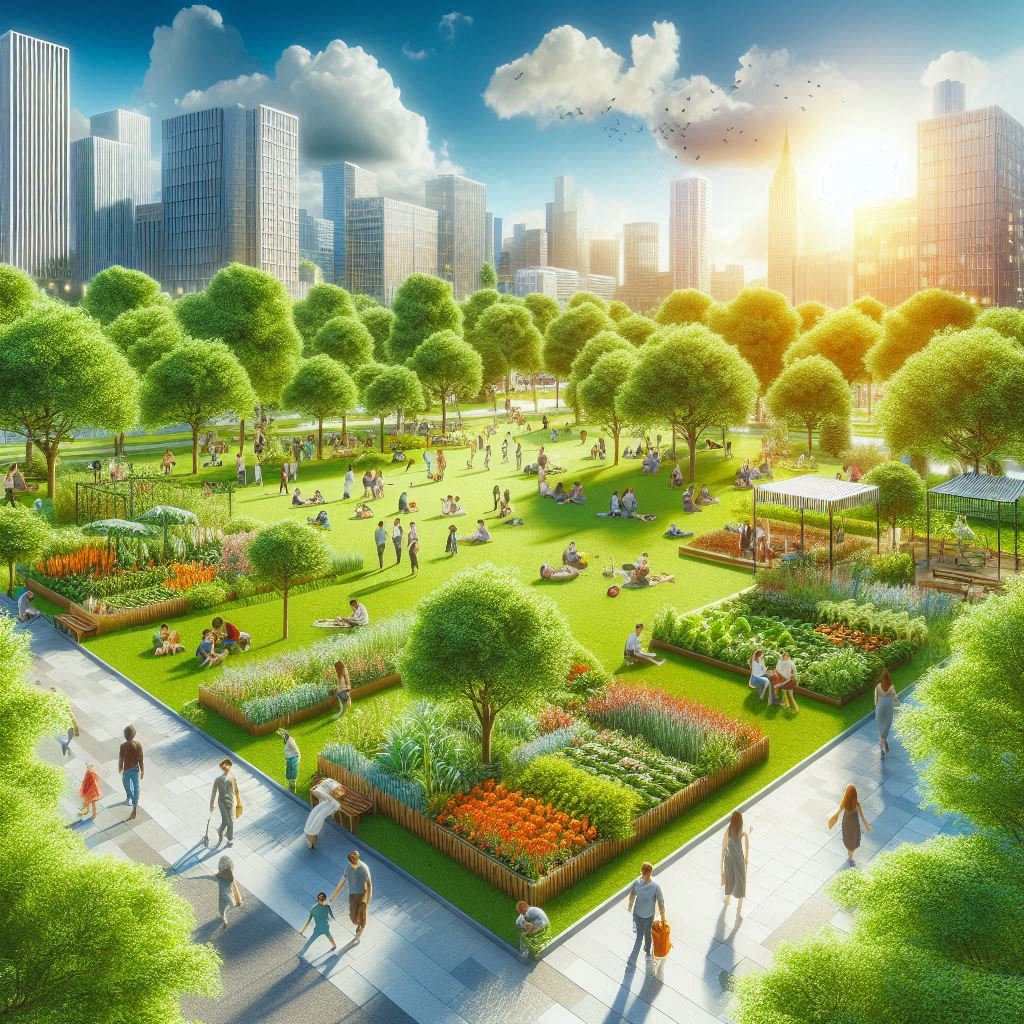
Urban Forestry focus points
Urban forestry is the study of trees in urban environments and their role in the urban ecosystem. Urban foresters work to manage and promote the growth of trees in urban areas, which can help improve air and water quality, mitigate the effects of climate change, reduce energy consumption, and enhance the quality of life for residents. Some of the key points of focus in urban forestry include:
- Tree Planning and Design: Urban foresters plan and design tree planting schemes to ensure that trees are planted in the right place and provide the greatest benefit. They consider factors such as soil type, drainage, and available space when selecting tree species.
- Tree Establishment and Maintenance: Urban foresters ensure that newly planted trees are properly established and cared for, including watering, pruning, and fertilizing. They also manage the maintenance of existing trees, such as pruning and tree removal when necessary.
- Tree Health and Protection: Urban foresters diagnose and treat diseases and pests that affect tree health, and take steps to protect trees from damage caused by construction or other activities.
- Urban Forest Management: Urban foresters manage urban forests and green spaces to promote their long-term health and sustainability. They develop management plans that consider factors such as tree growth rates, species diversity, and tree placement.
- Public Education and Outreach: Urban foresters educate the public about the benefits of urban forests and green spaces, and encourage public participation in tree planting and care.
- Policy and Advocacy: Urban foresters work to develop policies and regulations that support sustainable urban forestry, and advocate for the protection and preservation of urban forests and green spaces.
Arboriculture Vs. Urban Forestry Comparison Table
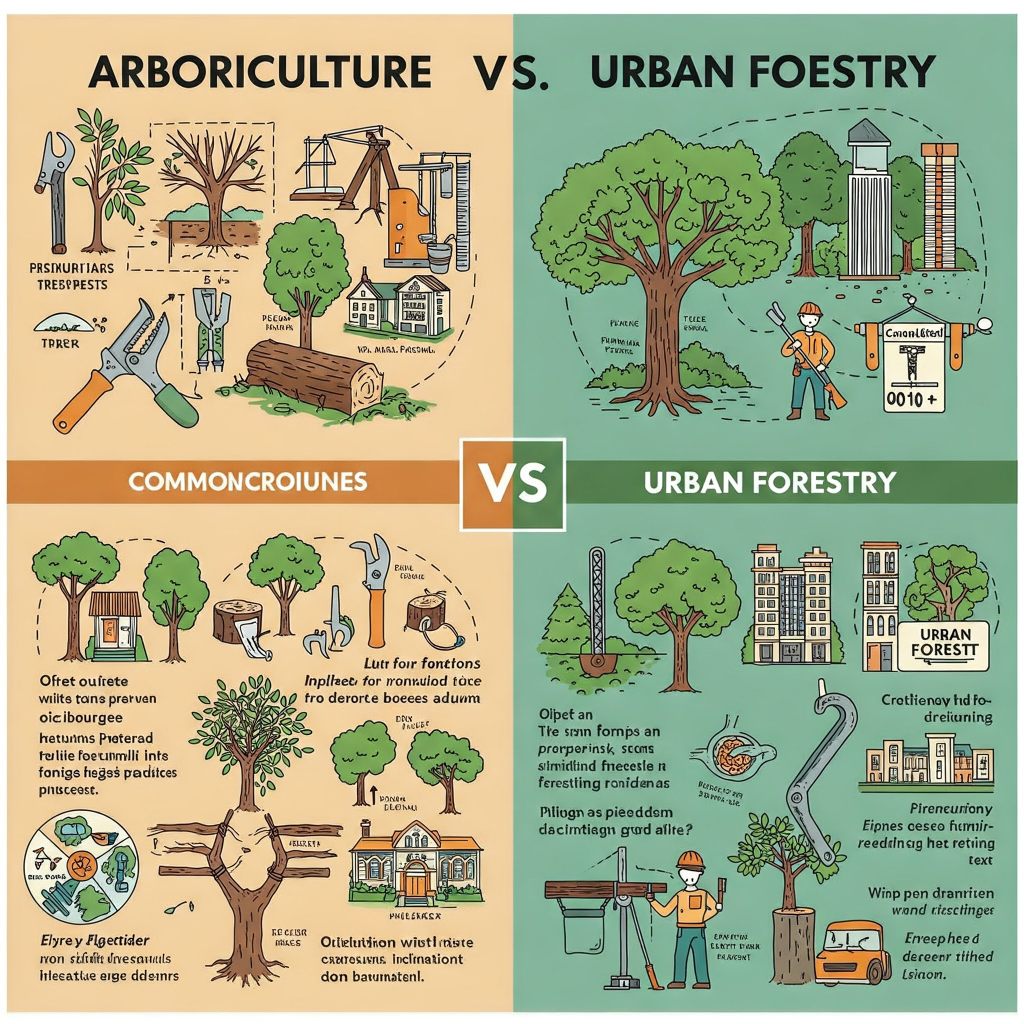
Here is a comparison table summarizing the differences between arboriculture and urban forestry:
| Aspect | Arboriculture | Urban Forestry |
|---|---|---|
| Focus | Individual trees | Trees in urban environments |
| Goals | Care, maintenance, and health | Sustainable growth and management |
| Scope | Residential, commercial, municipal | Urban and suburban areas, cities |
| Practices | Pruning, trimming, treatment | Planning, planting, maintenance |
| Benefits | Aesthetic and ecological value | Air and water quality, energy savings, climate change mitigation |
| Professionals | Arborists | Urban foresters, city planners |
Arborists and Urban Foresters: Similarities, Differences, and Jobs
Arborists and urban foresters are professionals who specialize in the care and management of trees. While there are some similarities between these two fields, key differences exist in their focus, goals, and job responsibilities. Here is a brief comparison of arborists and urban foresters:
- Also, Read the Difference Between Arborist Vs. Lumber Jack
Similarities:
- Focus on Trees: Both arborists and urban foresters focus on the care and management of trees.
- Tree Health: Both professions are concerned with maintaining the health and well-being of trees, including diagnosing and treating diseases, pests, and other issues that may impact tree health.
- Safety: Both professions prioritize safety, ensuring that trees are not a hazard to people or property.
- Knowledge of Trees: Both professions require knowledge of tree biology, anatomy, and physiology.
Differences:
- Scope: Arborists focus on the care and maintenance of individual trees, while urban foresters are concerned with the management of trees in larger urban and suburban areas, including parks, streetscapes, and green spaces.
- Goals: Arborists work to maintain and improve the health and appearance of individual trees, while urban foresters focus on promoting sustainable growth and management of urban forests and green spaces.
- Training: Arborists typically undergo hands-on training and apprenticeships, while urban foresters often have formal education in forestry, horticulture, or a related field.
- Job Responsibilities: Arborists are primarily responsible for pruning, trimming, and treating individual trees, while urban foresters are responsible for developing and implementing strategies for sustainable urban forestry, including planning, planting, and maintenance.
Job Titles and Responsibilities:
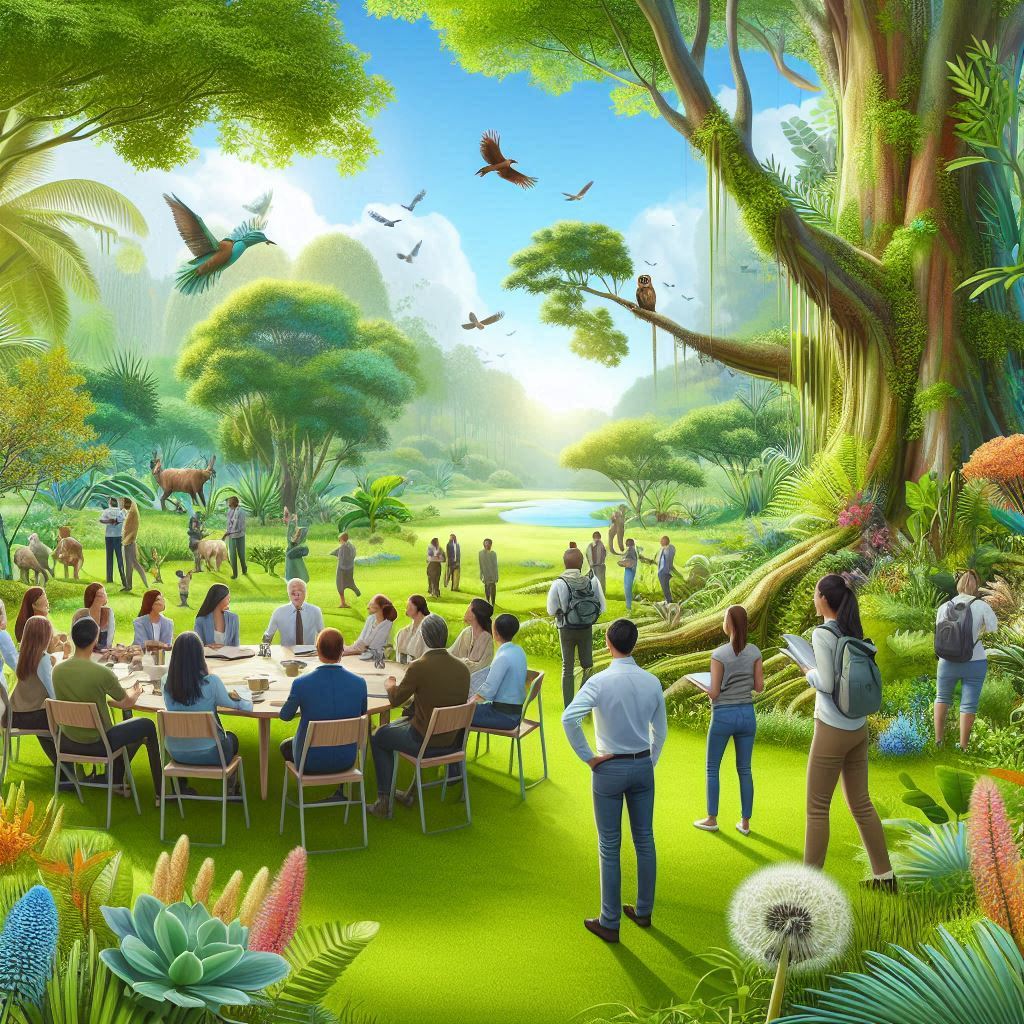
Arborists Job:
Arborists, also known as tree care professionals, are responsible for the care and maintenance of individual trees. Their job responsibilities include:
- Pruning and trimming trees to promote healthy growth and remove dead or diseased branches.
- Diagnosing and treating diseases and pests that affect tree health.
- Removing trees when necessary, such as when they pose a safety hazard.
- Consulting with property owners and managers on tree care and maintenance.
Urban Foresters Job:
Urban foresters are responsible for the management and growth of trees in urban and suburban areas. Their job responsibilities include:
- Developing and implementing strategies for sustainable urban forestry, including planning, planting, and maintenance of urban forests and green spaces.
- Managing the health and well-being of trees in urban areas, including diagnosing and treating diseases and pests.
- Ensuring that trees are not a hazard to people or property, including managing tree removal when necessary.
- Working with city planners, community groups, and businesses to promote the benefits of urban forestry.
While arborists and urban foresters share some similarities in their focus on tree care, there are also some key differences in their scope, goals, and job responsibilities. Arborists focus on individual tree care, while urban foresters are concerned with the management and growth of trees in larger urban and suburban areas.
Arboriculture And Urban Forestry Impact Factor
Arboriculture and urban forestry are both important fields that have a significant impact on the health and well-being of trees in urban environments. While there is no specific “impact factor” for these fields, there are several ways in which they contribute to the health and sustainability of urban forests and green spaces.
MSc. Arboriculture Vs. Graduate in Urban Forestry:
The MSc in Arboriculture and Urban Forestry is a graduate-level program that provides students with the knowledge and skills needed to manage trees in urban environments. The program typically includes coursework in tree biology, ecology, and management, as well as hands-on training in pruning, tree removal, and other tree care techniques.
Graduates of the MSc in Arboriculture and Urban Forestry are well-equipped to work as arborists, urban foresters, and other tree care professionals, and are able to make a significant impact on the health and sustainability of urban forests and green spaces.
Journal of Arboriculture and Urban Forestry:
The Journal of Arboriculture and Urban Forestry is a peer-reviewed academic journal that publishes research articles, case studies, and other content related to the care and management of trees in urban environments. The journal covers a wide range of topics, including tree biology, pest and disease management, pruning and trimming techniques, and urban forestry policy and management.
The Journal of Arboriculture and Urban Forestry is an important resource for researchers, arborists, and urban foresters who are interested in advancing the field of arboriculture and urban forestry. By publishing high-quality research and case studies, the journal helps to inform best practices in tree care and management, and contributes to the health and sustainability of urban forests and green spaces.
Urban Tree Benefits and Costs
Urban trees provide a range of benefits to cities and their residents, including economic, environmental, and social benefits. However, there are also costs associated with maintaining urban trees. Here is a brief overview of some of the benefits and costs of urban trees:
Benefits of Urban Trees:
- Environmental Benefits: Urban trees can help mitigate the impacts of climate change by absorbing carbon dioxide from the atmosphere and reducing urban heat island effects. They also improve air quality by absorbing pollutants and producing oxygen.
- Economic Benefits: Urban trees can increase property values and provide cost savings through reduced energy costs associated with shading and cooling buildings.
- Social Benefits: Urban trees provide aesthetic and recreational benefits by creating a more attractive and enjoyable urban environment. They also promote physical and mental health by providing opportunities for exercise and relaxation.
Costs of Urban Trees:
- Maintenance Costs: Maintaining urban trees requires regular pruning, watering, and fertilizing, which can be costly for cities and property owners.
- Liability Costs: Urban trees can pose a liability risk if they become damaged or diseased and pose a safety hazard to people or property.
- Infrastructure Costs: Urban trees can cause damage to sidewalks, roads, and other infrastructure if their roots grow too large or are not properly planted or maintained.
Summary
In conclusion, while arboriculture and urban forestry share similarities in their focus on trees, they differ in scope, goals, and practices. Arboriculture focuses on the care and maintenance of individual trees. In contrast, urban forestry focuses on managing and growing trees in urban environments for their ecological, aesthetic, and social benefits.
